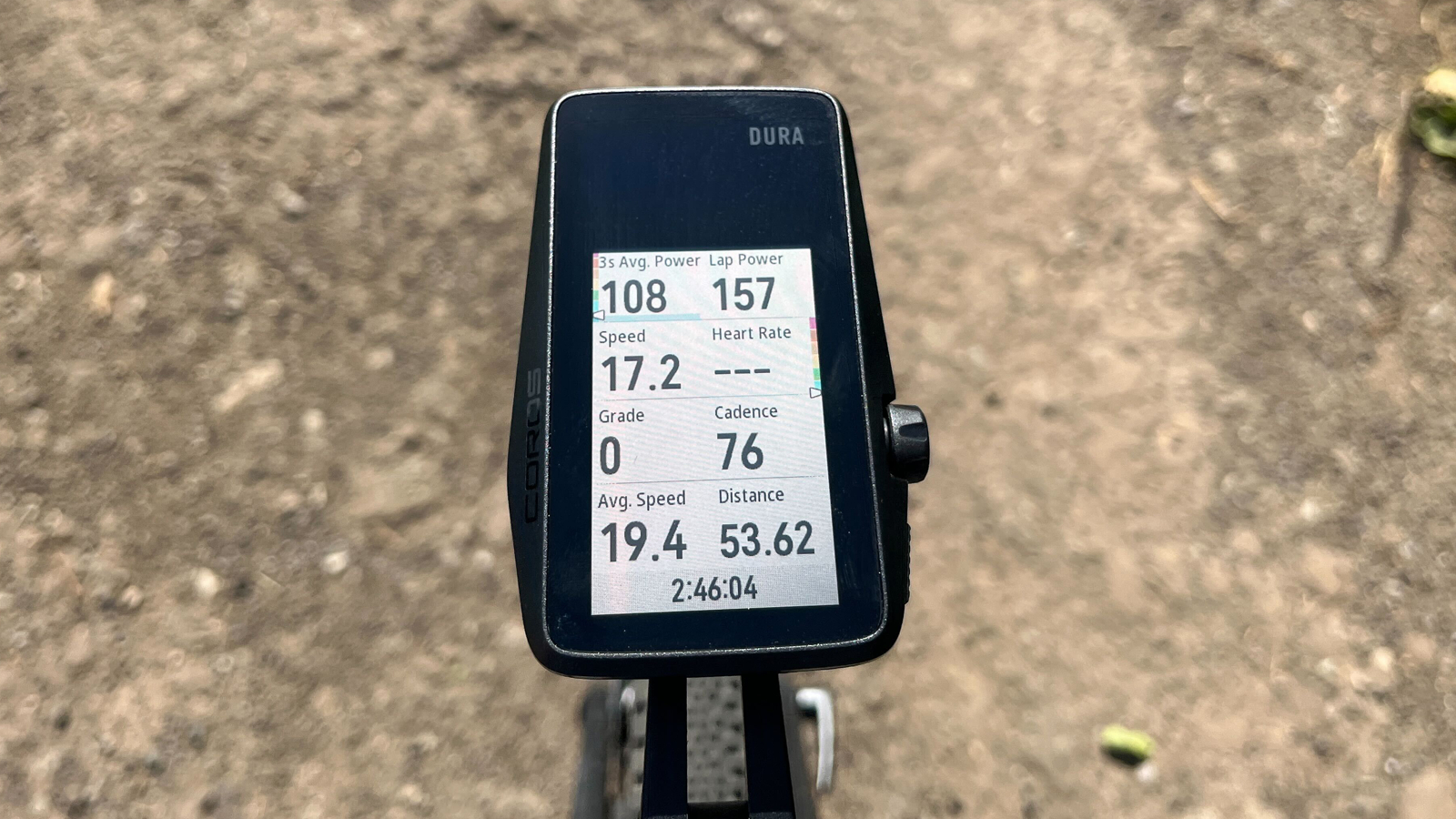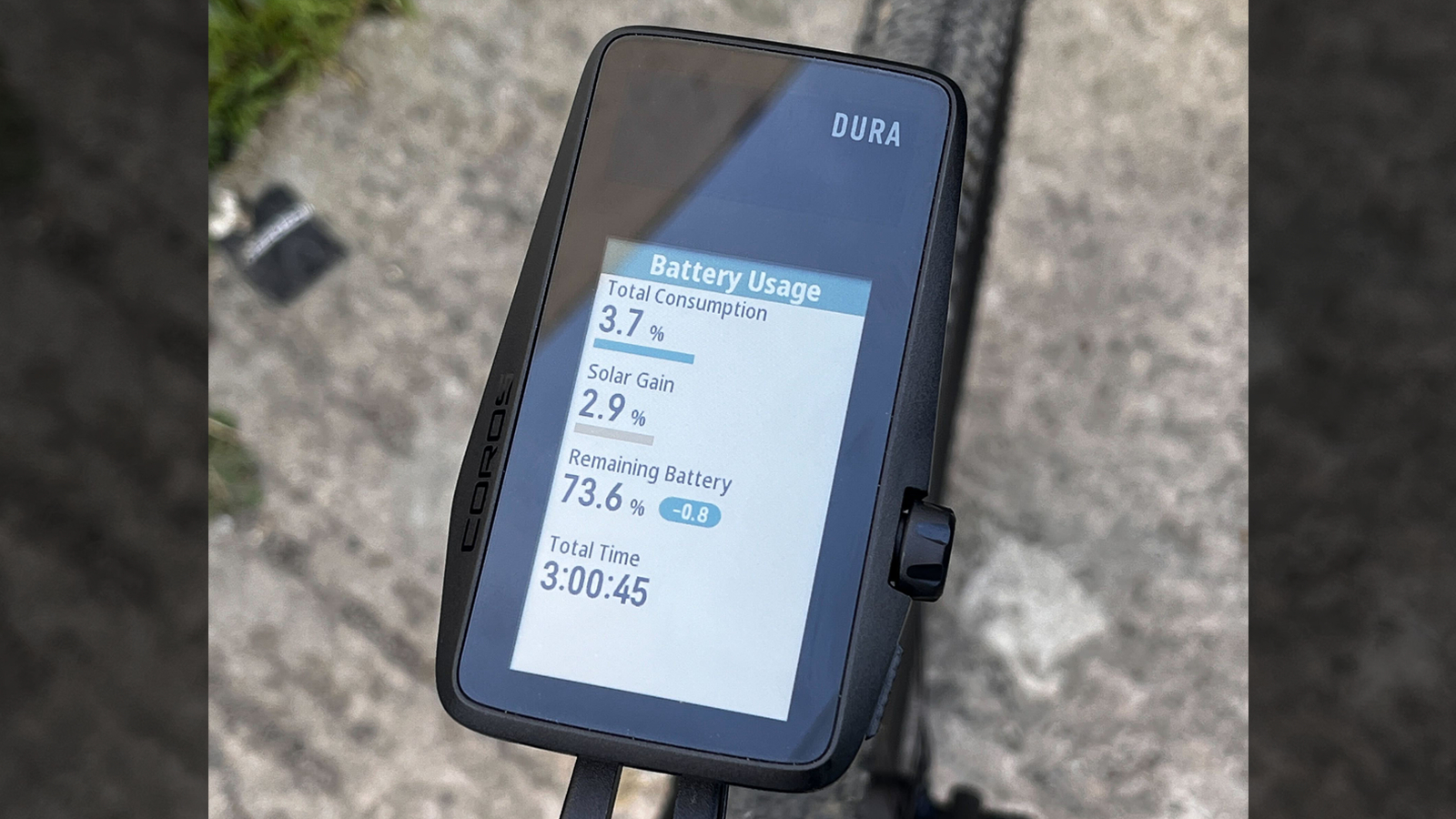
As first-world problems go, there aren't many that cyclists will be more familiar with than kitting up for a ride, only to find that your bike computer's battery is flat just as you're about to head out the door. If not that, then it's the anxiety of an old computer's battery draining from full to flat while you're following a route, hoping you'll hit familiar territory before being plunged into digital darkness.
It's one of the biggest complaints I had with the Hammerhead Karoo 2, whose battery lasts somewhere in the region of 8-10 hours, and though it's my go-to computer at home, it was forced to sit on the sidelines when I tackled the Chasing Cancellara 275km sportive in 2022.
While the latest Karoo is better, and the best bike computers offer battery lives that vary between marginally better and bloomin' brilliant, a new computer from smartwatch brand Coros has hit the proverbial ball out of the battery life park.
It's called the Dura, and it marks a direction shift and a step into the cycling market for the first time for the Chinese brand.
It features a 2.7-inch screen, a solar panel, a Garmin-style quarter-turn mount, and a full-colour touchscreen backed up by a Digital Dial and an accompanying button. It has dual-frequency GPS, offers on-device re-routing, and can connect to external sensors such as heart rate monitors or power meters.
All the details and Coros' claims can be found in our launch story - Coros launches Dura computer - but having taken it out for a three-hour ride yesterday, I have a few thoughts to share.

Battery
As the headline suggests, in my three-hour ride, the Coros Dura drained just 0.8%. If you take that figure and extrapolate it out, I could feasibly expect 375 hours of riding. For someone doing seven hours of riding a week, you'd need to charge it once a YEAR. Insane.
And that was using all of the Dura's features, including GPS routing, with a power meter connected. I regularly missed turns and thus forced it to re-route me, and the display was on using the inbuilt ambient sensor.
There's some nuance to that figure, though. The battery drain during my ride was actually 3.7%. The solar panel contributed a 2.9% recharge, which is how the 0.8% net consumption figure is achieved. If I only ever rode in the dark, that 3.7% drain would extrapolate out to around 81 hours of ride time. Still very very good.
Yesterday was a very sunny day. I'm no expert in the ideal conditions for a solar panel, but I would say yesterday would have been up there. Coros says the solar panel offers a 200% efficiency (two hours ride time for every hour of "direct sunlight") and that's not quite what I achieved, but we all know the UK isn't best known for its sunshine. I was hoping to finish the ride with more battery than I started, but 0.8% loss is still an incredible result, especially given I wasn't necessarily giving it a constant stream of direct sunlight, what with tree cover and the occasional cloud.
I should also add that my device is running the beta software (ahead of the official launch), and Coros says the battery will improve once on the public software.
All things considered, it's safe to say that nobody will have to worry about battery life when owning this computer. You could even go out with it on 10% and expect to get a full day of riding, something that you can't say for any other computer.

Features
There's little point in me diving too deeply here because Coros is currently in the process of switching from beta software to the consumer-facing finished product, rolling out various firmware updates, and adding features and functionality along the way.
At the moment, the Dura does everything you realistically need, without doing too much else.
It can connect to your external sensors via Bluetooth and ANT+, it has dual-frequency GPS functionality, on-device maps, and the ability to re-route if you miss a turn. You can download a route or workout from popular apps (Strava, Komoot, Training Peaks, and so on) and you can upload your workout directly to your chosen app automatically via WiFi upon your return home.
Some of the planned updates for the coming weeks/months are listed below but there are plenty more besides.
- RideWithGPS integration
- Cycling activities and full workout builder support on COROS Training Hub
- Outdoor temperature readings
- "Climb" feature when following routes will be improved and will better display long climbs
- Strava Live Segments
- Shorter sync time for sending Strava routes to the COROS app
- Media controls for playback on phone via Bluetooth
- Optimisations for Turn-by-Turn so that it's more responsive at high speeds
Any negatives?
On my ride, I found the Dura worked well, but the software was quite slow to respond to inputs. When you press a button, roll the dial or touch the screen, there is a split-second delay before the screen reacts, especially when on the map. While this may improve with firmware updates in the coming weeks, I found it to be a little frustrating.
The navigation of the Coros Dura is unlike any other, in that the menu is operated via a 'Digital Dial'. This is a rolling dial on the side of the device, which acts as a button when pressed, similar to all Coros watches or the Digital Crown on the Apple Watch Ultra.
The dial is really light action, and at first, coupled with the slow input response I thought I hadn't spun it correctly, and so I would go again, only for the screen to catch up and overshoot what I wanted. Once you learn to be patient with it, it's fine, but it's not as slick as it could be, and I would prefer a more tactile click as you scroll.
I also found that when trying to press the button mid-ride, you could easily scroll the dial onto the next menu item while clicking. Luckily Coros asks you to press and hold for three seconds to end a ride, otherwise, I would have accidentally ended my ride multiple times, but it did lead to multiple instances of incorrect selections.
Value
Compared to the big three of Garmin, Wahoo and Hammerhead, the Coros Dura is incredibly competitively priced.
At £249.00 / US$249.00 / €289.00 / AU$449.00, it is priced in line with the Wahoo Elemnt Bolt - a button-navigation device with a 2.2-inch screen and a much smaller body. The Dura is the cheapest with a touchscreen, and it offers a good list of features.
Verdict
After just one ride, it's impossible to land on a verdict that you as a reader should be able to trust, but some aspects did stand out.
The battery life of the Dura is easily one of the best on the market, even bettering Garmin's solar-powered models twice its price. I accept that for most people, a 375-hour battery doesn't add any value over and above a 50-hour battery because nobody is riding that long without an overnight stop, but it's reflective of an easy-to-own overall package that's ready to ride whenever you are.
The price is competitive, the functionality is well-considered, and while the menu navigation has shown itself to be a bit slow, this will hopefully iron out with the firmware updates.
So far, the Coros Dura looks like a serious product that's only set to improve, and at a price that will appeal to many.







